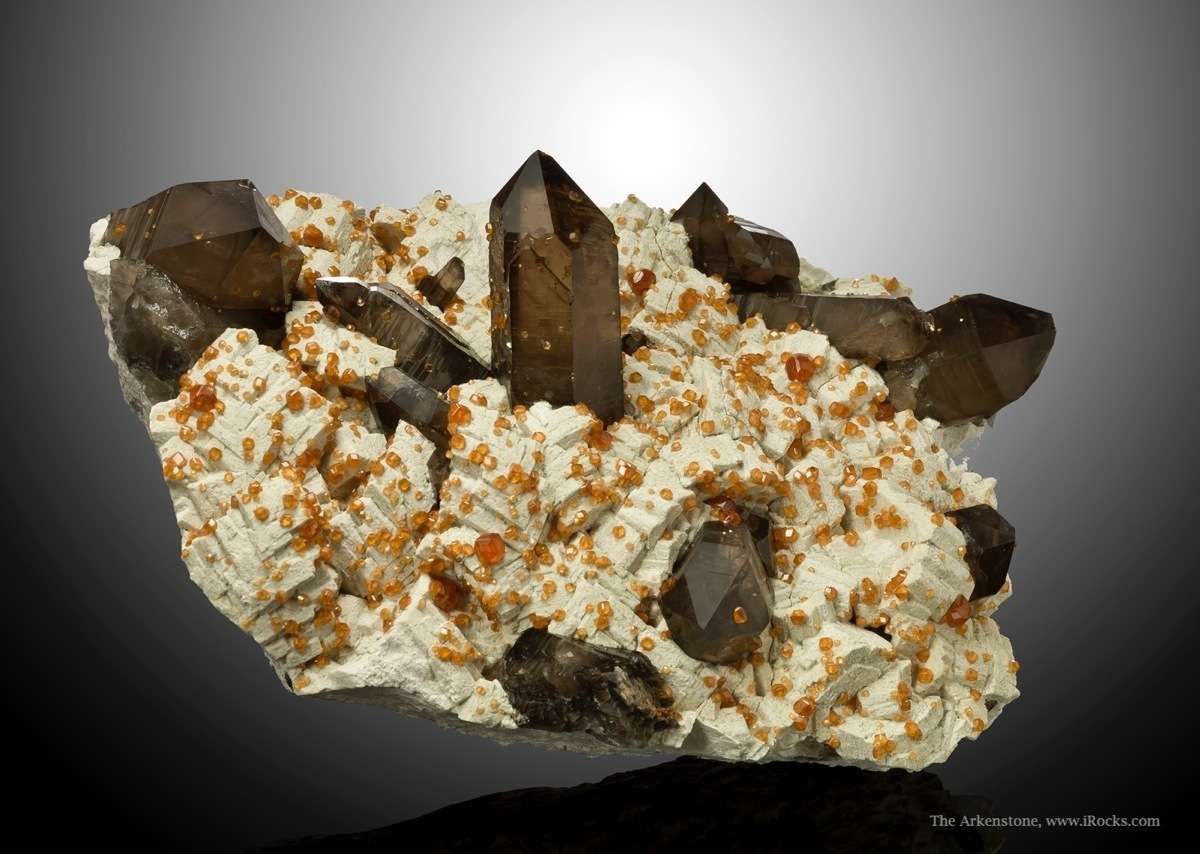How Does Quartz Form?
Quartz is one of the most abundant minerals on earth. Learn how quartz forms and how its most popular varieties get their colors.
2 Minute Read
What is Quartz?
Quartz is the second most abundant mineral in the Earth’s crust. It comes in many different varieties. Amethyst, citrine, and agate are just a few popular gem forms of quartz.
In the most basic sense, quartz is the crystalline form of silicon dioxide. When quartz grows into large crystals, lapidaries can cut varieties such as rock crystal, smoky quartz, amethyst, or citrine. Quartz can also grow into stones made of tiny microcrystals. In this case, lapidaries can cut chalcedonies, like agate or jasper.
How Does Quartz Form?
Most quartz forms in either igneous rocks or environments with geothermal waters.
In igneous rocks, quartz forms as magma cools. Like water turning into ice, silicon dioxide will crystallize as it cools. Slow cooling generally allows the crystals to grow larger.
Quartz that grows from silica-rich water forms in a similar way. Silicon dioxide dissolves in water, like sugar in tea, but only at high temperature and pressure. Then, when the temperature or pressure drops, the solution becomes saturated, so quartz crystals form.
How Does Smoky Quartz Form?
Quartz gets smoky brown shades when the rocks around it contain radioactive elements. Over time, the natural radiation alters the crystal,…
Addison Rice
A geologist, environmental engineer and Caltech graduate, Addison’s interest in the mesmerizing and beautiful results of earth’s geological processes began in her elementary school’s environmental club. When she isn’t writing about gems and minerals, Addison spends winters studying ancient climates in Iceland and summers hiking the Colorado Rockies.
Related Articles
Quartz Value, Price, and Jewelry Information
Understanding Gem Synthetics, Treatments, And Imitations, Part 4: Synthetic Gemstone Guide
Can You Identify Gems Without Seeing Gemstone Colors?
Trapiche Gems: An Introduction
Latest Articles
800 Years of Mogok: A Celebration in Tenuous Times
What is the Average Gemstone Faceting Yield?
Pyroxmangite Value, Price, and Jewelry Information
How to Identify Emerald Simulants and Synthetics
Never Stop Learning
When you join the IGS community, you get trusted diamond & gemstone information when you need it.
Get Gemology Insights
Get started with the International Gem Society’s free guide to gemstone identification. Join our weekly newsletter & get a free copy of the Gem ID Checklist!
